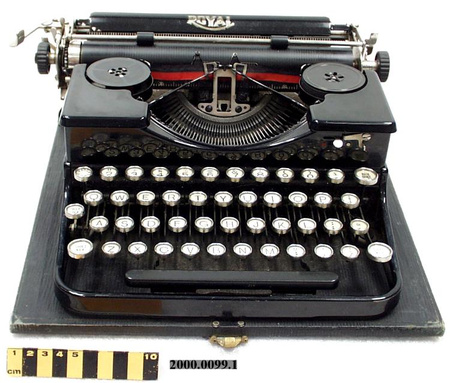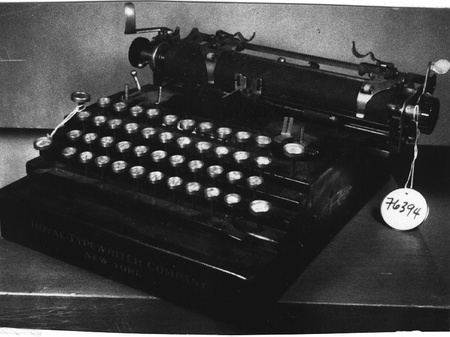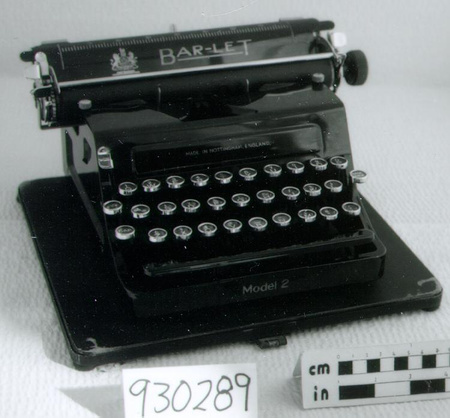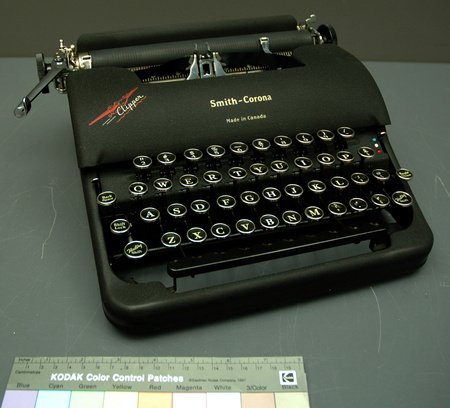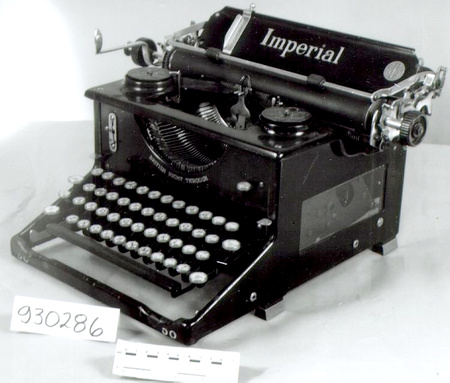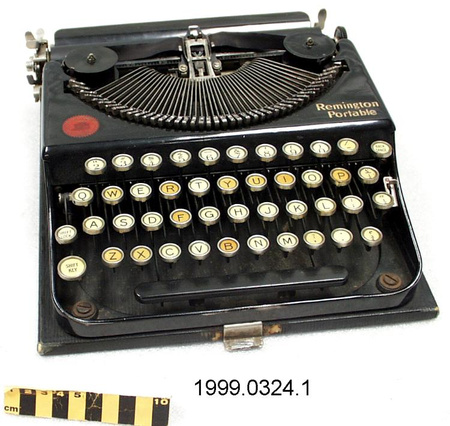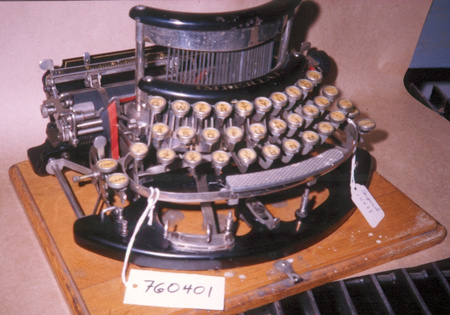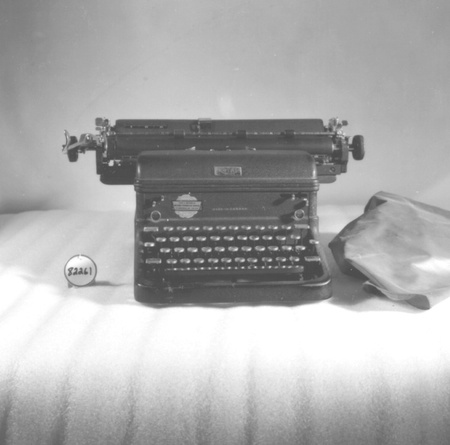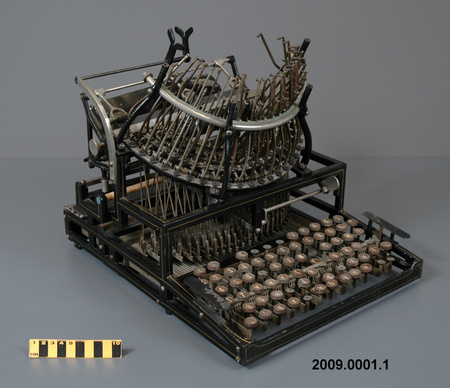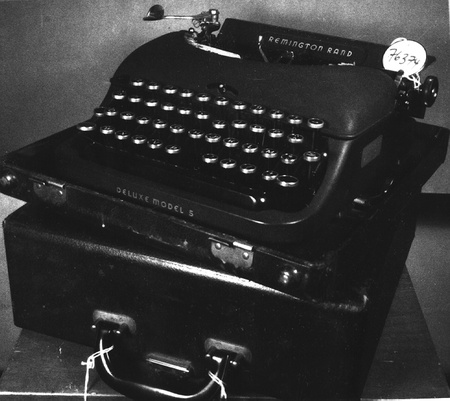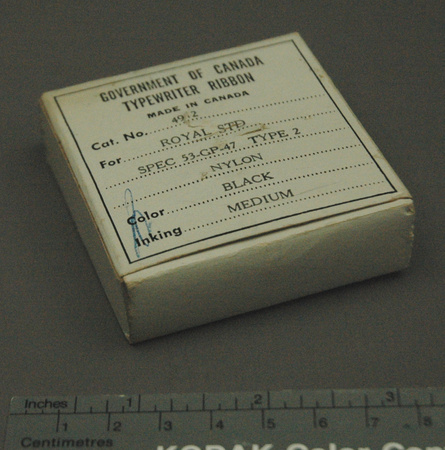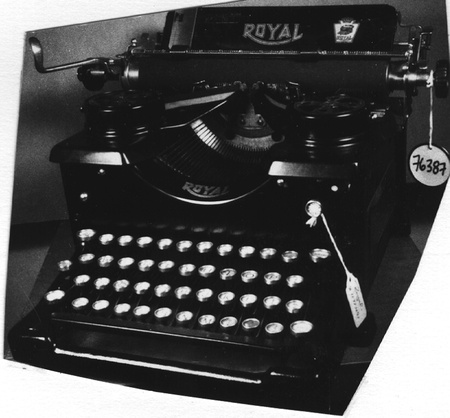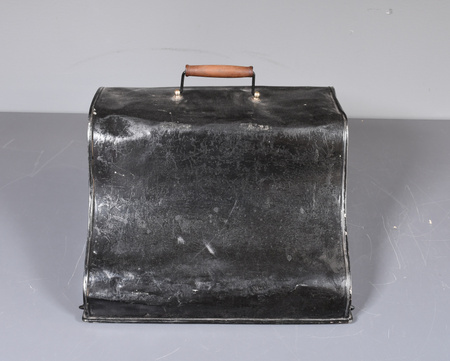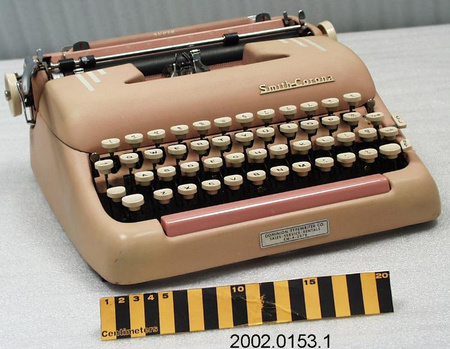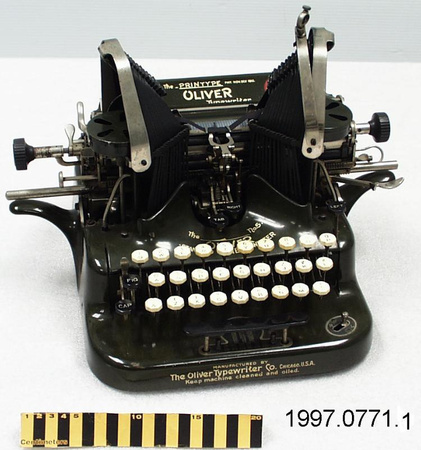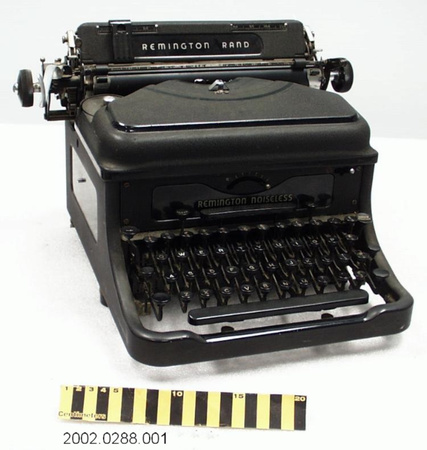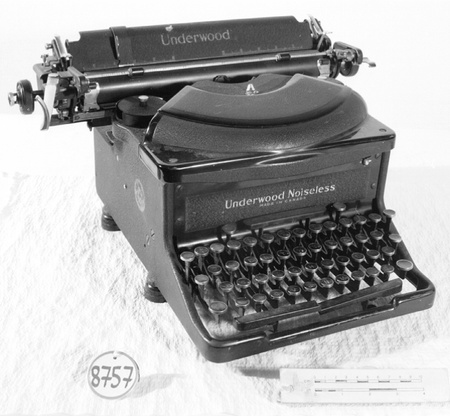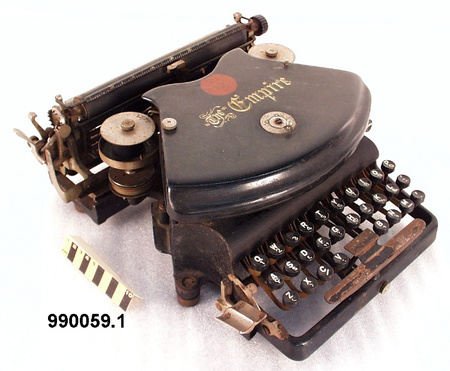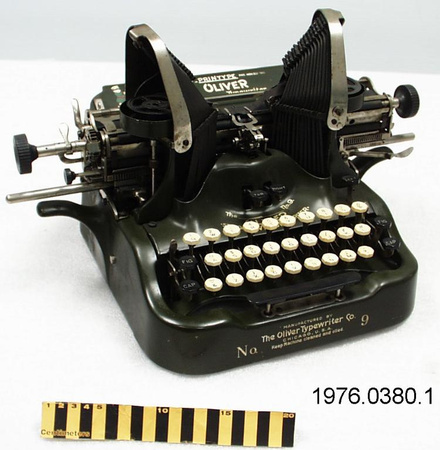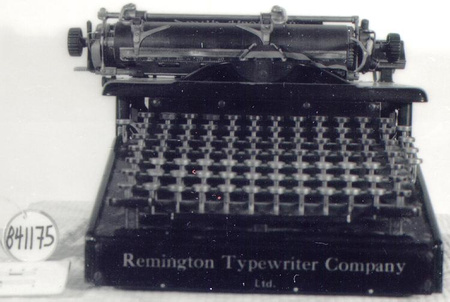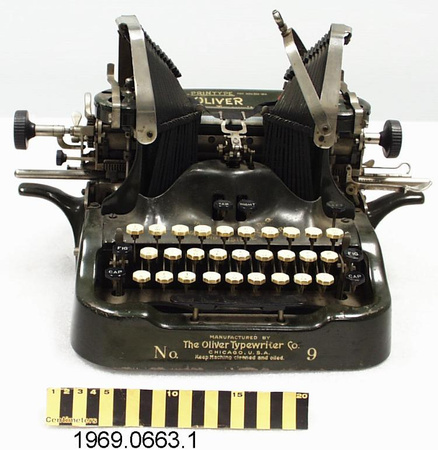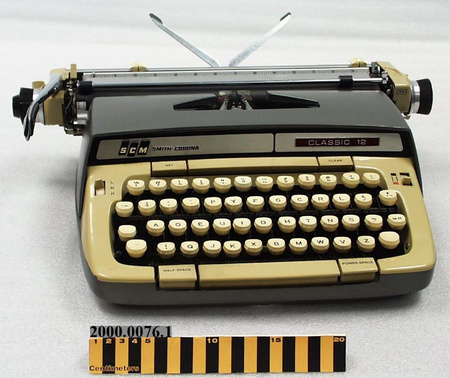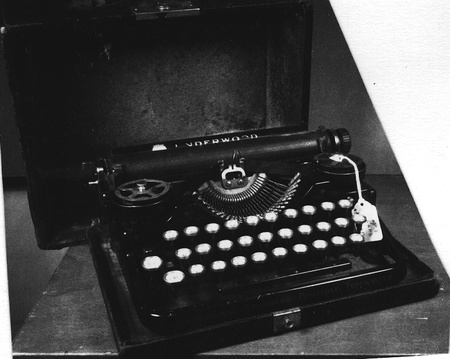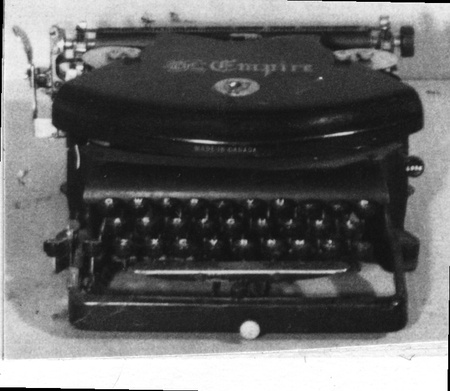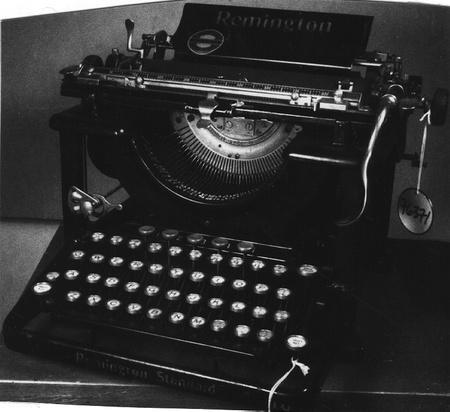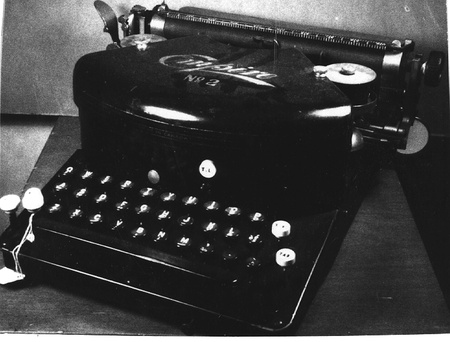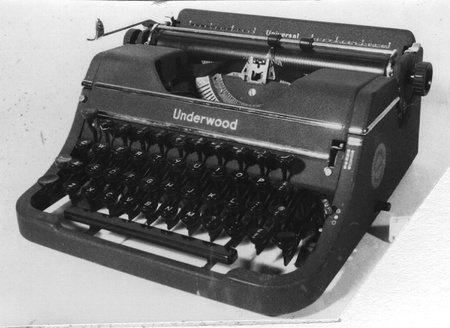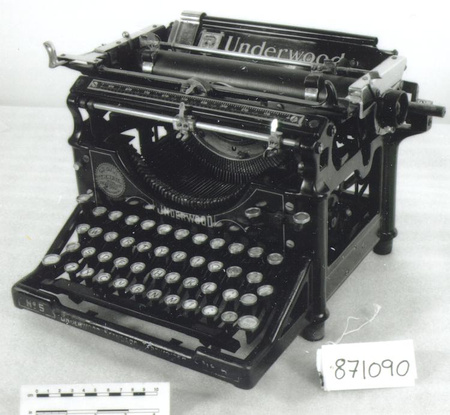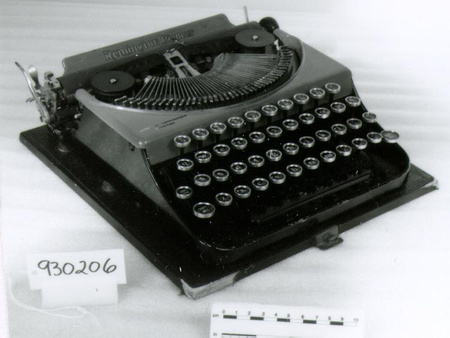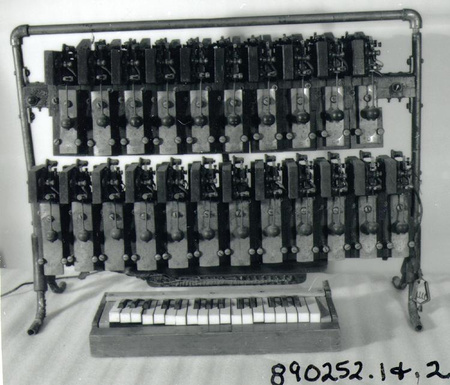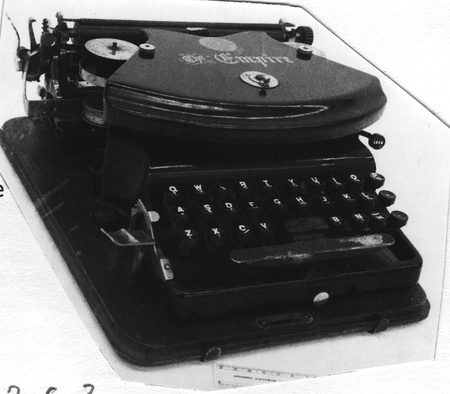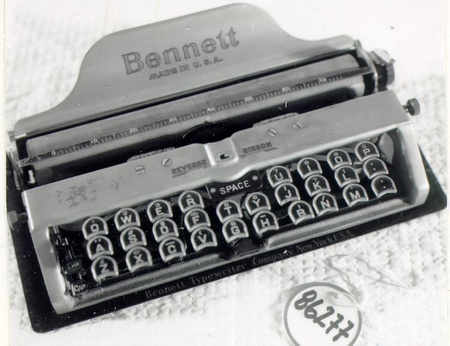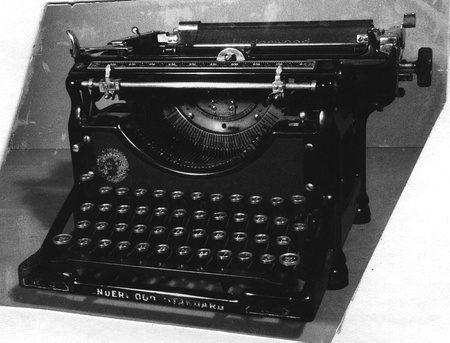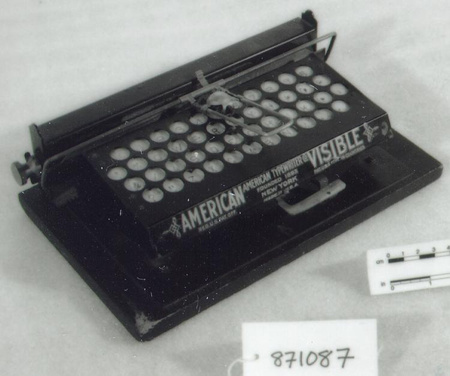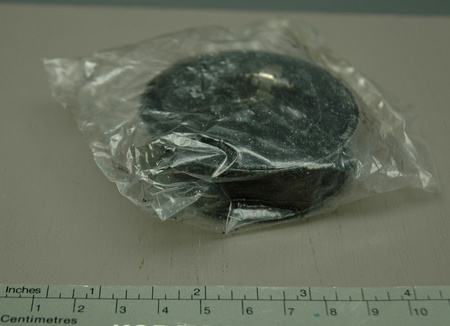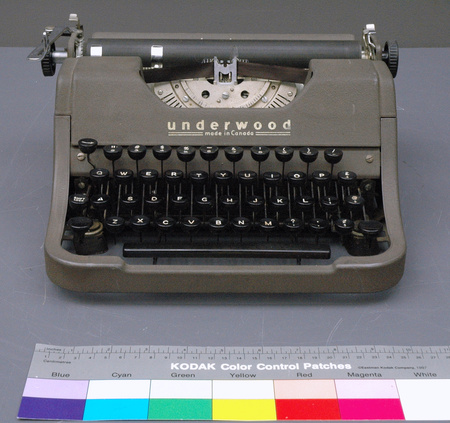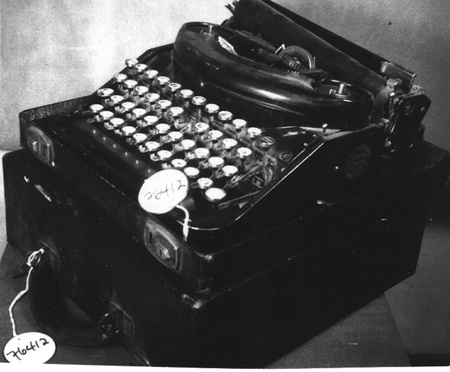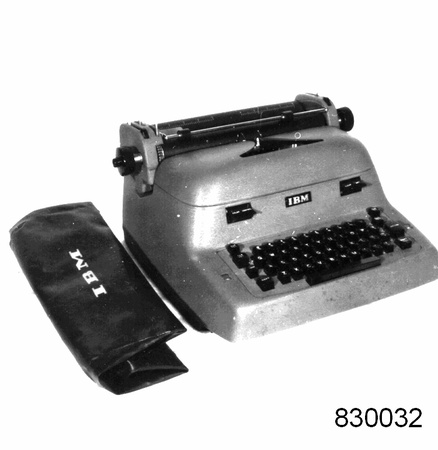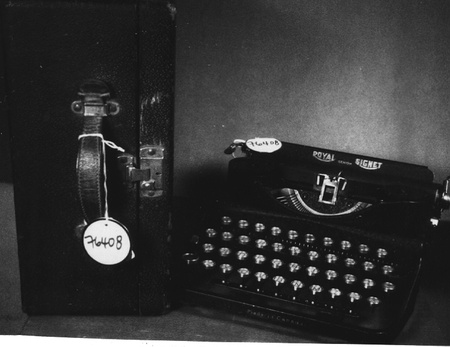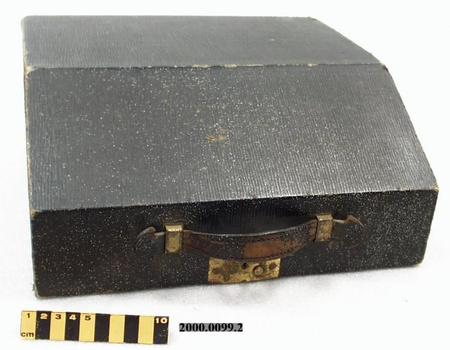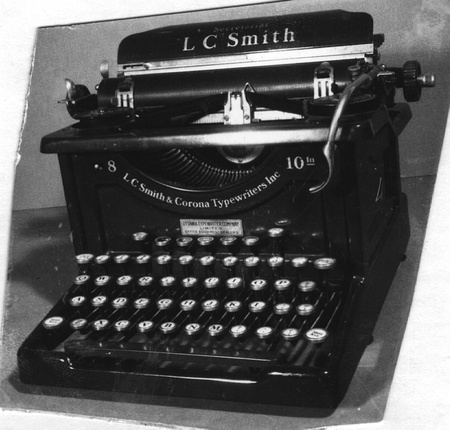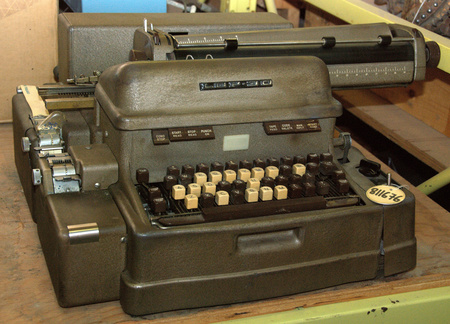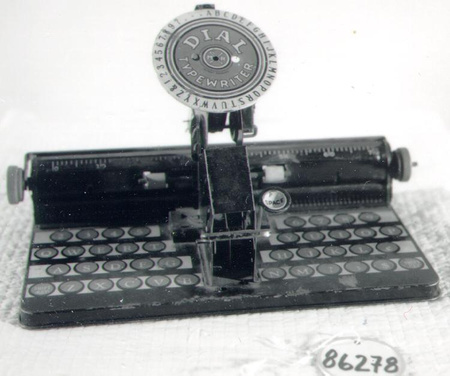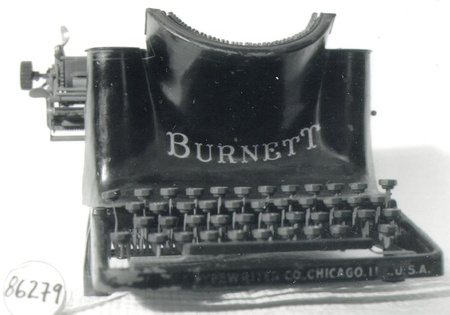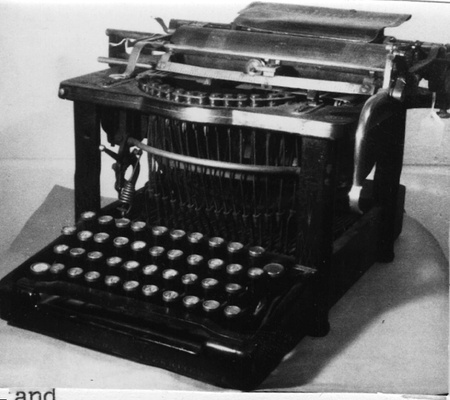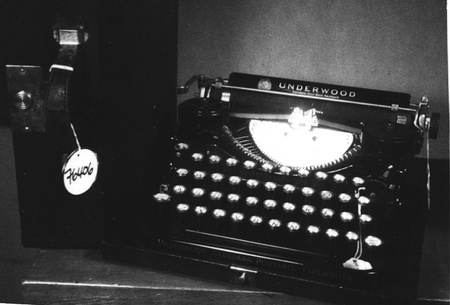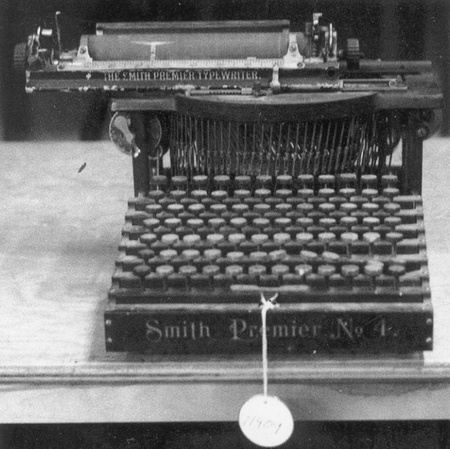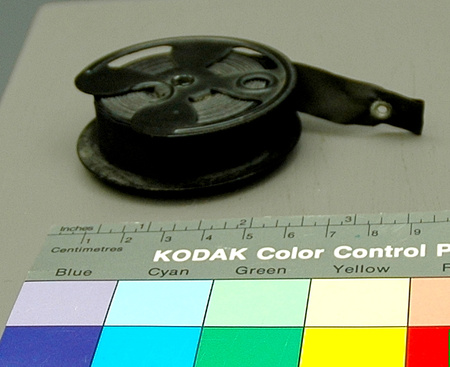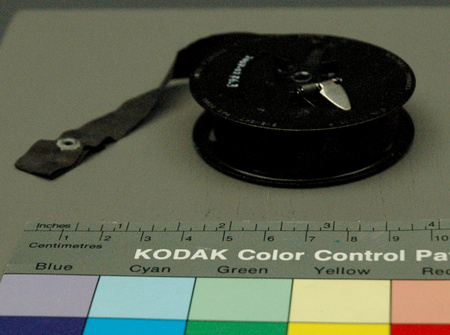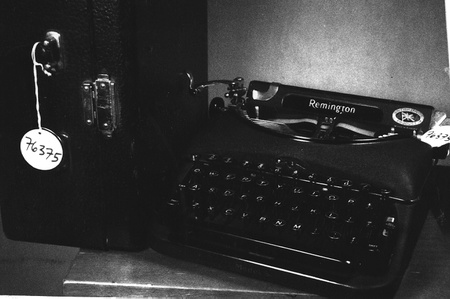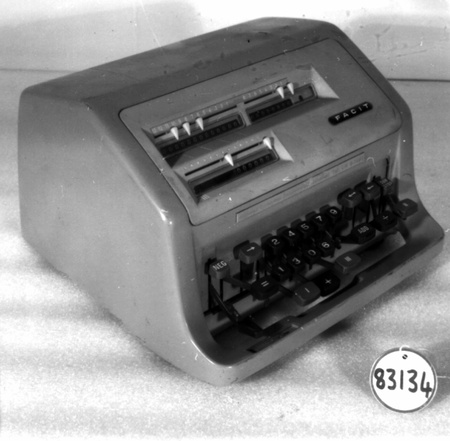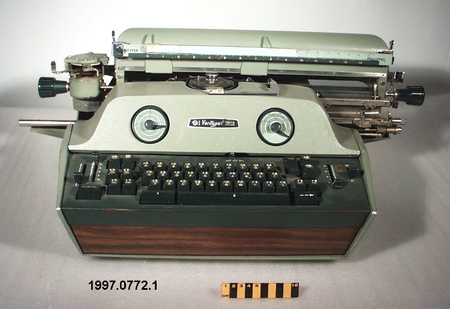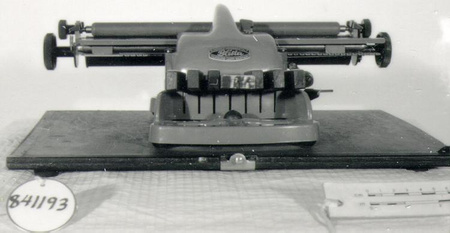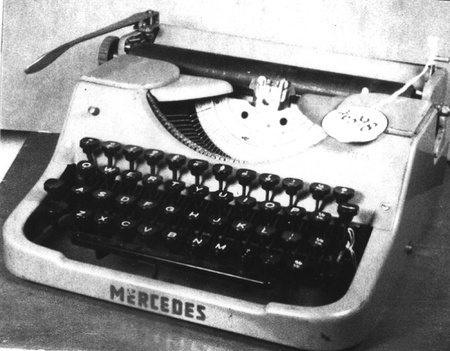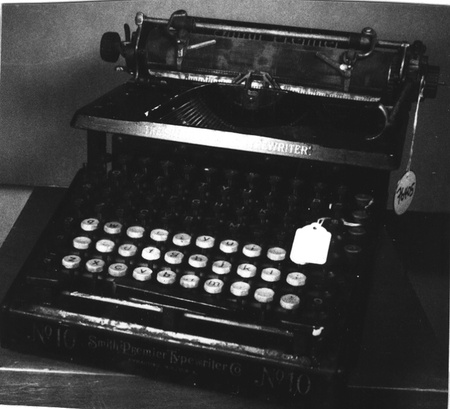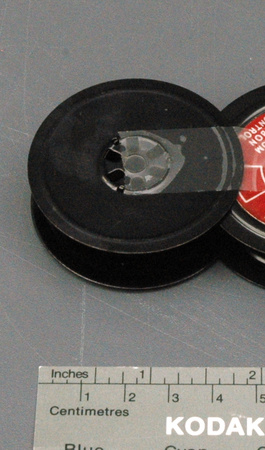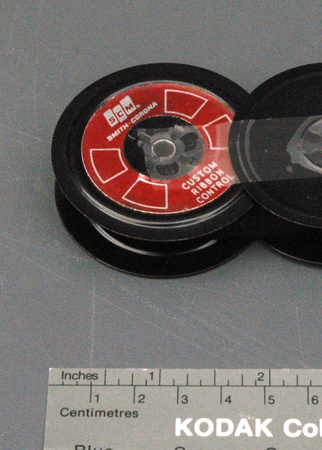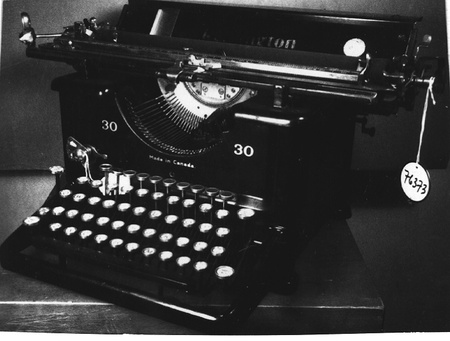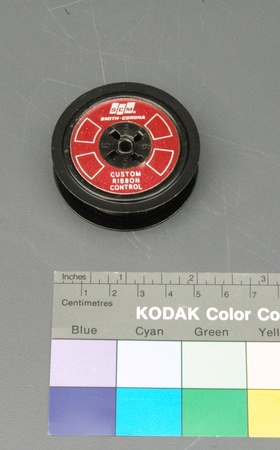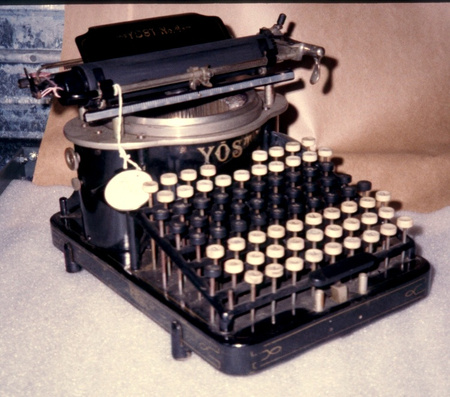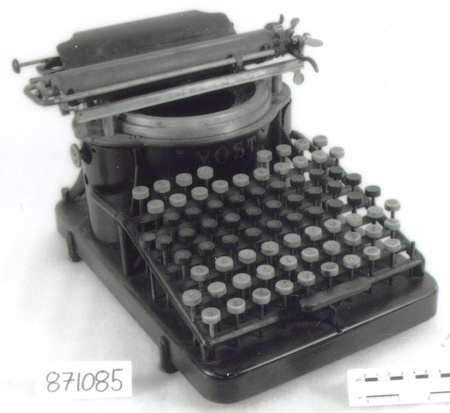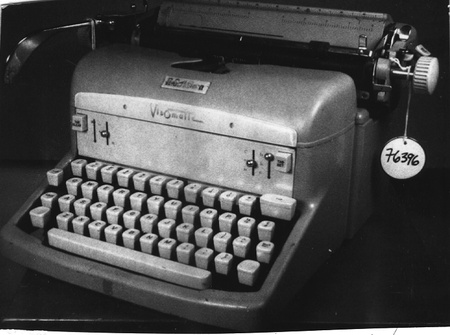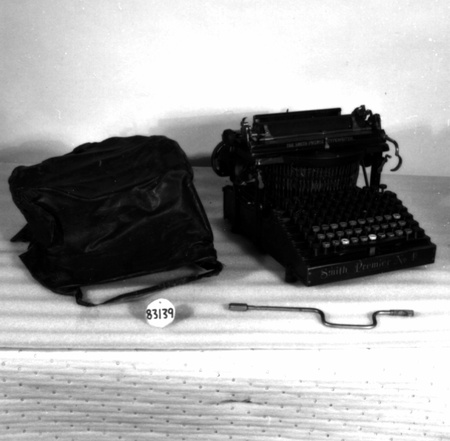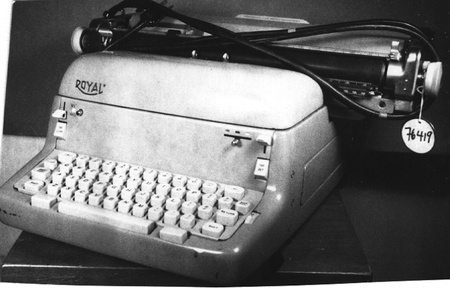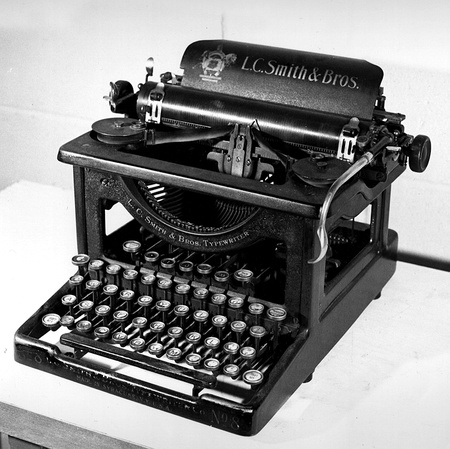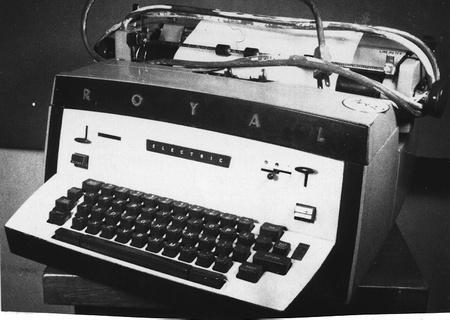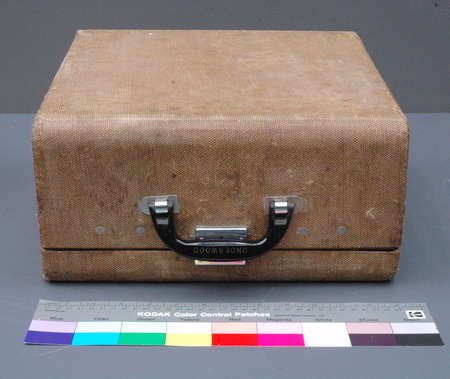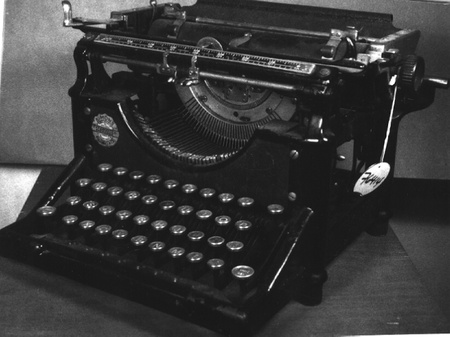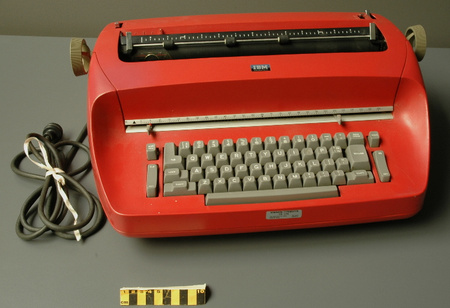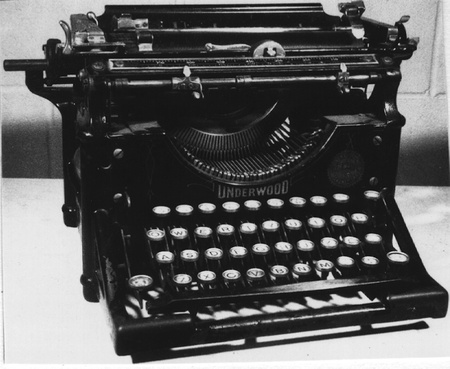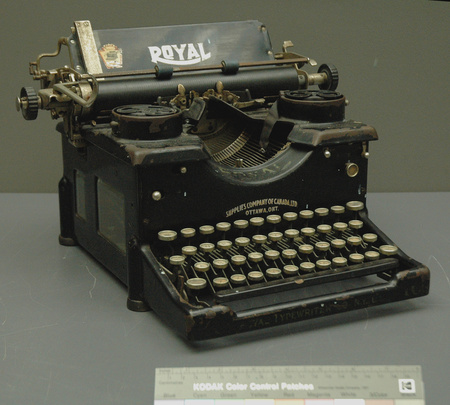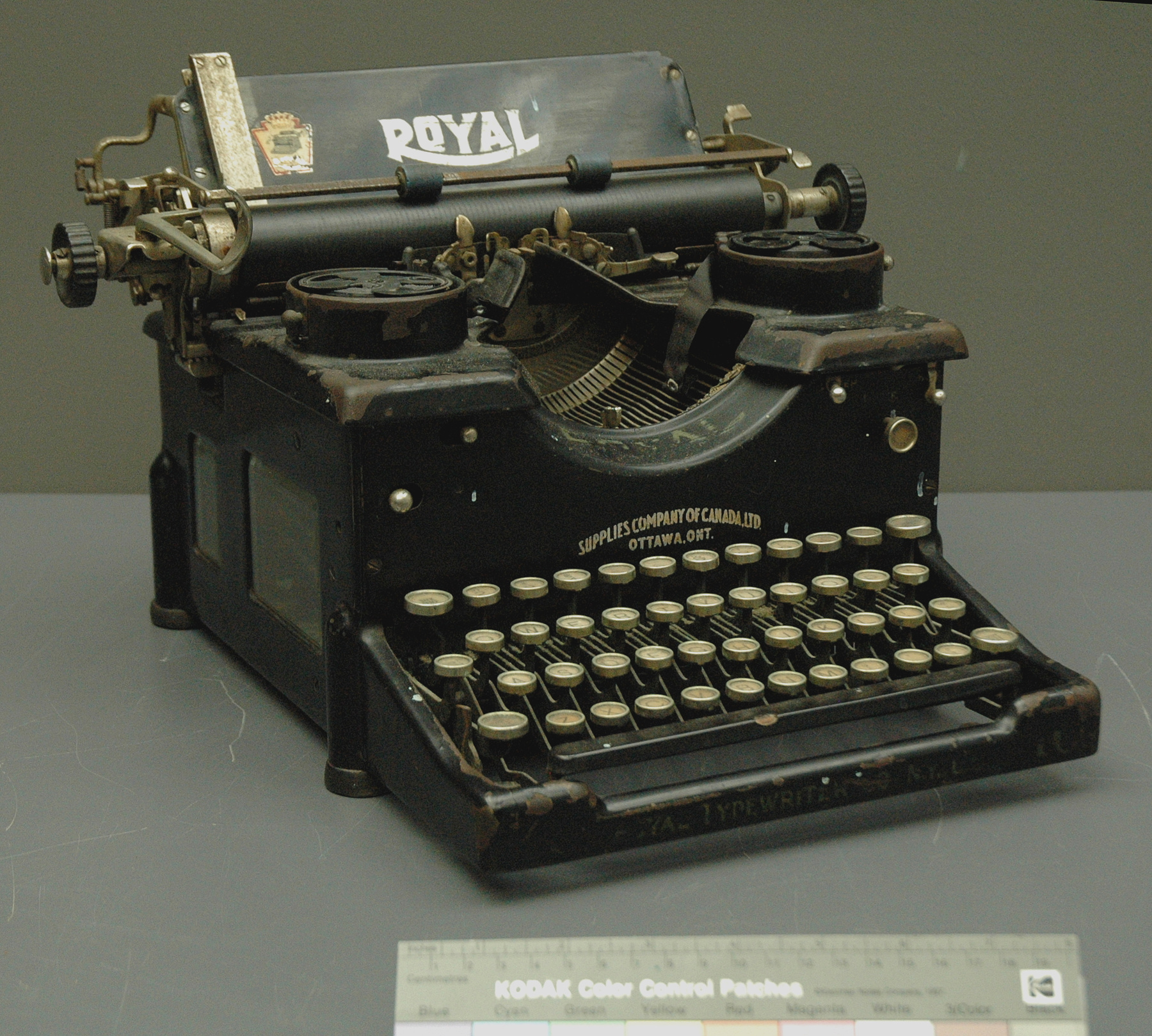Typewriter
Use this image
Can I reuse this image without permission? Yes
Object images on the Ingenium Collection’s portal have the following Creative Commons license:
Copyright Ingenium / CC BY-NC-ND (Attribution-NonCommercial 4.0 International (CC BY-NC 4.0)
ATTRIBUTE THIS IMAGE
Ingenium,
2007.0276.001
Permalink:
Ingenium is releasing this image under the Creative Commons licensing framework, and encourages downloading and reuse for non-commercial purposes. Please acknowledge Ingenium and cite the artifact number.
DOWNLOAD IMAGEPURCHASE THIS IMAGE
This image is free for non-commercial use.
For commercial use, please consult our Reproduction Fees and contact us to purchase the image.
- OBJECT TYPE
- type-bar/front-stroke/floating shift/portable
- DATE
- 1920
- ARTIFACT NUMBER
- 2007.0276.001
- MANUFACTURER
- ROYAL TYPEWRITER CO. INC.
- MODEL
- 10
- LOCATION
- New York, New York, United States of America
More Information
General Information
- Serial #
- X316850
- Part Number
- 1
- Total Parts
- 5
- AKA
- N/A
- Patents
- N/A
- General Description
- Predominantly metal machine has black finish on most exterior surfaces; dull silver metal carriage, strike bars and other select fittings; black rubber (?) roller and feet; some minor black synthetic (?) fittings; clear glass windows in base; keys bear black print on off-white synthetic (?) background.
Dimensions
Note: These reflect the general size for storage and are not necessarily representative of the object's true dimensions.
- Length
- 38.5 cm
- Width
- 36.8 cm
- Height
- 26.5 cm
- Thickness
- N/A
- Weight
- N/A
- Diameter
- N/A
- Volume
- N/A
Lexicon
- Group
- Printing
- Category
- Typesetting
- Sub-Category
- N/A
Manufacturer
- AKA
- ROYAL TYPEWRITER
- Country
- United States of America
- State/Province
- New York
- City
- New York
Context
- Country
- Canada
- State/Province
- Ontario
- Period
- This example used early 1940's to mid 1960's.
- Canada
-
This type writer once belonged to the donor's father, Laurier Léveillé, and was passed down to his daughter Louise upon her graduation from the Ottawa University in 1974. Louise never made use of the typewriter but kept it as a souvenir of her father. As an enlisted student of the LaSalle Academy (French Catholic school for boys, located in downtown Ottawa) during the early 1940's, Laurier used the typewriter to write-up schoolwork. At this time, he held a part-time position in a small print shop called "Lajeunesse". It is believed that his employer gave the typewriter as a congratulatory gift for having made it to his last year of high school. Sometime around 1950, Léveillé launched his own print shop, which he fittingly named "Léveillé Printing" in Vanier (Ottawa, ON). He used the typewriter throughout his career to do his bookkeeping and to type invoices. Sometime in the mid 1960's, Léveillé purchased an electric Smith-Corona typewriter to replace the aging Royal No. 10 and so decided to retire it until his daughter could make use of it. Laurier Léveillé managed his company until his death in 1986. [Ref. 1] - Function
-
To mechanically print characters on a piece of paper, both rapidly and uniformly. - Technical
-
Manufactured by the Royal Typewriter Co. (established by E.B. Hess in c. 1906), the Royal No. 10 typewriter is considered by many to be one of the finest mechanical typewriters ever built. Early No. 10's were adorned with four beveled glass windows ( two on either side of it's frame). Later versions were produced with only one large window per side. This feature made the Royal No. 10 a very attractive piece to own. The RTC advertised the Model 10 as being one of the strongest and sturdiest typewriters available. To prove this point, the RTC packed No. 10's in crates and threw them off airplanes to show that they could even withstand falls from high altitudes. The No. 10 was extremely popular. So popular in fact, that the RTC produced slightly modified versions of it for over 15 years. It is the most common Royal found on the market: because of this, the No. 10 is of little or no collector value today. Many variations of the No. 10 were manufactured to refresh it's consumer appeal. The second Model 10, possessing the first modifications brought to the original design, was released in 1915 with a new tabulator. The third No. 10 was the "Royal Master" model. The fourth variant, introduced c. 1930 was the SX- Series No. 10 which incorporated a segment (basket) shift. In 1935, Model "H" was released. Model H's inner mechanisms were the same as the No. 10, but it had a different top plate. This new top plate led to the creation of a new body style or appearance found in the No. 10's final variant, the KHM. It should be noted that the small but important changes that occurred in the RTC's Model 10 line of typewriters is what led to it's well-known and celebrated status. By the end of the 1930's, because of the No. 10's popularity, Royal became the largest brand of typewriters sold worldwide. [Ref. 1] - Area Notes
-
Unknown
Details
- Markings
- "ROYAL" appears in off-white text on paper support and curved edge of casing front, below striking arms. "SUPPLIES COMPANY OF CANADA, LTD./ OTTAWA, ONT." and "10 ROYAL TYPEWRITER, CO. N.Y., U.S.A./ 10" printed on casing front. "X316850" stamped into plate visible through top of casing back. "ROYAL/ STANDARD" and "This Machine is protected by American and Foreign Patents" appears on casing back. List of patents printed in upper left of casing back in illegible. Keys are labelled.
- Missing
- Appears complete.
- Finish
- Predominantly metal machine has black finish on most exterior surfaces; dull silver metal carriage, strike bars and other select fittings; black rubber (?) roller and feet; some minor black synthetic (?) fittings; clear glass windows in base; keys bear black print on off-white synthetic (?) background.
- Decoration
- Decal incorporating elaborate crown and stylized typewriter applied to left side of paper support face.
CITE THIS OBJECT
If you choose to share our information about this collection object, please cite:
ROYAL TYPEWRITER CO. INC., Typewriter, circa 1920, Artifact no. 2007.0276, Ingenium – Canada’s Museums of Science and Innovation, http://collection.ingenium.ca/en/item/2007.0276.001/
FEEDBACK
Submit a question or comment about this artifact.
More Like This
